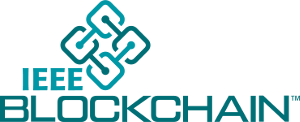Blockchain Technology – Prospects, Challenges and Opportunities
Muhammad Fateh Khan Sial, Assistant Professor, Department of Electrical Engineering, University of Lahore, Lahore, Pakistan
IEEE Blockchain Technical Briefs, June 2019
Discuss this topic on IEEE Collabratec
Blockchain is a digital database that is distributed across a large network. It is a sequence of interconnected blocks comprising of list of transaction records [14]. Blockchain is considered to be a public ledger in which all transactions are stored in the form of blocks. The chain expands as each new block is appended to it. Transactions cannot be altered once they are made part of blockchain. The size of database keeps on increasing as new blocks are appended to the older ones. A transaction can take place in a decentralized fashion, thus, saving cost and improving efficiency. Every time an update is made to the database on a network node, it is automatically updated across the entire network. Total number of transactions stored in a block depends on the size of each transaction and the block. Every transaction must be approved by the network nodes, each of whom verifies its validity. This block is validated using consensus algorithms where majority of network nodes approve the transaction [14].
Blockchain utilizes technologies like, distributed consensus mechanism, digital signature and cryptographic hash. The key strengths of this technology are that the records are reliable, persistent, auditable, anonymous and decentralized. Blockchain has diverse applications like crypto-currencies, online payments, digital assets, remittance, smart contracts, internet of things, security and financial services etc.
Architecture:
A Block consists of a header and the body. The block header comprises of a block version, timestamp and address of the previous block etc. The block body consists of actual transaction details and the transaction counter [5]. Each block in the blockchain network points to the previous block, called ‘parent’ block, using a hash function. The very first block having no parent is referred to as ‘genesis’ block [14]. Children of the ancestor blocks are called ‘uncle’ blocks.
Blockchain transaction process is initiated as soon as a “transaction” is requested by a network node. The request and user status are authenticated by the network using cryptographic algorithms. The verified transaction is appended with other authenticated transactions stored in a block. Once a block reaches a certain number of approved transactions, a new block is generated. After validation, the block is appended to the older blocks making it a permanent part of blockchain [2][10][11]. All the network nodes are updated with the changes every few minutes.
Characteristics:
Some of the characteristics of blockchain networks are illustrated in Figure 1. It is impossible for hackers to hack these network nodes as cryptographic techniques have been deployed to secure it [1]. Each transaction is authenticated and validated using digital signature based on cryptographic algorithms [14]. The blockchain network is decentralized in nature which makes it more transparent and reliable for the storage and transfer of important data, currency, financial transaction or any valuable record [2][3]. Each transaction is validated using a timestamp which makes it possible to trace and verify previous records by accessing any network node. It helps in improving transparency of data stored on the network [14]. Each user interacts with the network with a generated address. A certain amount of user privacy is preserved as there is no central entity that stores user’s private information. It is possible to perform anonymous transactions on the blockchain network. It only requires the network address of the receiver to perform the transactions [11].
A transaction can be performed between any two peers directly without interference of any central entity. It results in reduced operation and development cost of servers. Any falsification in data can be detected easily as each broadcasted block will be validated by other network nodes. The record cannot be altered without the consensus of group members, which makes blockchain transactions more reliable and persistent. The network nodes verify transactions collectively. Any financial transaction made on the network is confirmed and secured using cryptographic algorithms. Once a transaction has been verified by the network, it is placed in a block in a way that newer blocks are placed under previous blocks of financial transactions.
Being a shared database, details of the financial transaction are visible to all nodes. So, the network is transparent and requires trust of the users. Financial transactions can be made without the need of third-party interference. There is no central point of failure, so the network keeps on running even if any of the nodes leaves the network, making all the data accessible to users all the times. Records in a blockchain are immutable and will be saved for unlimited time [1][2][3][11].
Figure 1. Blockchain characteristics [2]
Types of Blockchain:
A blockchain network has three types: public, private and consortium [2][4].
- Public Blockchain: These networks allow anyone to join the network and execute transactions visible to every network user. There is no trust relationship among the network users before joining the network. Transaction can be verified by any node. All nodes participate in the transaction consensus process. Bitcoin and Ethereum belong to the class of public blockchain [11].
- Private Blockchain: These networks are permission based. These are also referred to as “permissioned ledgers” and are constructed using Hyperledger Fabric which is hosted by Linux Foundation. The digital records can be encrypted and are visible only to authorized users, thus privacy requirements of the data are fulfilled [3][4][5]. The main difference between private and public networks is user verification and authentication mechanism [3]. In public blockchain networks, there is no trust relationship among the network nodes. Before any transaction can be performed, there is computing overhead involved in user validation which increases the time for each transaction. Contrarily, in private blockchain networks, permission based trust is involved before any transaction is made. It significantly reduces the computation overhead for running the authentication and validation algorithms. Consequently, thousands of transactions can be performed per seconds on private blockchain networks as compared to a few transactions per second in public networks. The blockchain network can be owned by a single network provider or multiple consumers. The owner of the network determines whether it is public or private in nature [3][4].
- Consortium Blockchain: In consortium networks, block authentication is performed by a set of specific nodes. It is categorized as semi private and permissioned blockchain. It is a partially centralized system controlled by a few selector nodes, contrary to public blockchain (decentralized) and private blockchain (centralized). Network nodes having authority can configure the data in blockchain to be public or private. R3CEV and Hyperledger are examples of Consortium Blockchain networks [11].
Challenges:
There are a few challenges associated with the blockchain networks [2][9]. There is huge storage requirement as the validation process involves the whole blockchain. Only a few transactions can be performed per second due to fixed block size which in turn causes increased transaction delays and high transaction fee. If the block size is increased, it will cause additional delay in block propagation. Moreover, it is possible to generate fake blocks by the network nodes or generate transactions that are reverse confirmed. Rapid generation of blocks is possible by increased power consumption, resulting in legitimate blocks not being able to get their share of blockchain network resources. An important challenge of blockchain networks is the energy consumption. These transactions consume huge amount of energy. It is estimated that each Bitcoin transaction consumes 80,000 times more energy as compared to a credit card transaction.
Applications:
This technology not only benefits crypto-currencies but also many different industries that need to store and manipulate huge amounts of data. Blockchain technology has the potential to support the field of financial, public and social services like land record management, asset management, educational services, energy conservation, citizen registration systems, patient management, taxations system, security and privacy enhancement of mobile devices and associated services [14]. Here are some of the industries that employ blockchain technology to improve their operations: banking, cybersecurity, academia, marketing and advertising, supply-chain management, ecommerce, voting, supply-chain networks, finance, asset management, healthcare, real estate, Internet of Things, government record keeping and health industries etc. [2][5]. An overview of blockchain areas of applications and associated services is listed in Table 1.
In general, blockchain technology is applicable for the following conditions [12],
- Digitization of assets to provide data driven business models.
- Digitization of processes and transactions among business partners.
- Provision of immutable records of transactions and assets.
- Provision of decentralized, permanent and secure data storage.
| Category | Applications |
|---|---|
| Financial records/models | Public and private equities, bonds, commodities, spending and trading records, mortgage and loan records, microfinance, crowd-funding, voting rights and micro-charity |
| Public records | Birth, death and marriage certificates, passport, vehicle registration, voter registration, criminal records, permits for business, buildings and guns, business ownership records, regulatory records, court records |
| Private records | Contracts, signatures, wills, trusts and escrows |
| Semi-public records | Medical records, accounting records, HR records, degrees, certificates, business transaction records |
| Physical Asset keys | Home, hotel, car, locker, safety deposit etc. |
| Intangibles | Coupons, vouchers, movie tickets, patents, copyrights, trademarks, licenses for software, videogames, movies and books |
| Others | Data records like sports score, weather records, spam control, sim cards, weapon unlock codes |
Table 1: Blockchain applications and services [13]
Future directions:
Leading platforms that are driving innovation in this area are Hyperledger, R3 and Ethereum [3]. These open source communities are at the foundation of the Blockchain platform technology “pyramid”. Multiple horizontal and vertical platforms are being developed by IT vendors like IBM, Microsoft, Oracle, SAP etc. These companies are developing horizontal Blockchain platform based on the three open source technologies, mentioned above, at the base of the pyramid. Subsequently, this middleware serves as the middle layer of the pyramid. Customized solutions for different Blockchain verticals are being developed by different consulting companies like KPMG, Accenture and Cognizant etc. These system integrators and consulting companies constitute the top of the pyramid [3].
The field of Blockchain technology is at the nascent stage. It is anticipated that the enterprises will extend their existing IT systems with Blockchain based systems to test its functionality and upgrade internal business processes and models subsequently. However, it will take time for the industry to appreciate the real benefits of this technology and the value it could bring to an organization, before the core IT functions are completely transferred to this technology.
References:
[1] Mazonka, Oleg. Blockchain: Simple Explanation. Journal of Reference, 29 December 2016.
[2] D. Puthal, N. Malik, S. P. Mohanty, E. Kougianos, and G. Das. Everything you Wanted to Know about the Blockchain: Its Promise, Components, Processes, and Problems. IEEE Consumer Electronics Magazine, Volume 7, Issue 4, July 2018, pp. 06-14.
[3] Kaladhar Voruganti. Networking-for-nerds-blockchain-technologies [online]
Available: https://blog.equinix.com/blog/2018/01/15/networking-for-nerds-blockchain-technologies/
[4] V. Buterin. On public and private blockchains 2015 [online]
Available: https://blog.ethereum.org/2015/08/07/on-public-and-private-blockchains/.
[5] Z. Zheng, S. Xie, H. Dai, X. Chen, and H. Wang. An Overview of Blockchain Technology: Architecture, Consensus, and Future Trends. Proceedings of the IEEE International Congress on Big Data, pp. 557-564, 2017.
[6] R. Grinberg. Bitcoin: An Innovative Alternative Digital Currency. Hastings Science & Technology Law Journal, Vol. 4, pp. 159-208, 2012.
[7] S. Barber, X. Boyen, E. Shi, and E. Uzun. Bitter to better -- How to make bitcoin a better currency. Proceedings of the International Conference on Financial Cryptography and Data Security, pp. 399-414, 2012.
[8] S. Nakamoto. Bitcoin: A Peer-to-Peer Electronic Cash System. [Online]
Available: https://bitcoin.org/bitcoin.pdf. Last visited 15 August 2018.
[9] N. Popper. There is Nothing Virtual About Bitcoin's Energy Appetite. The New York Times, 21st Jan 2018. [online]
Available: https://www.nytimes.com/2018/01/21/technology/bitcoin-mining-energy-consumption.html
Last Accessed on 15 August 2018.
[10] X. Li, P. Jiang, T. Chen, X. Luo, and Q. Wen. A Survey on the Security of Blockchain Systems. Future Generation Computer Systems, 2017, doi = https://doi.org/10.1016/j.future.2017.08.020.
[11] Iuon-Chang Lin, Tzu-Chun Liao. A Survey of Blockchain Security Issues and Challenges. International Journal of Network Security, Vol.19, No. 5, pp. 653-659, Sept. 2017.
[12] Thomas Mueller. Three simple steps to find the ultimate answer to the question: “ When do I need Blockchain for my business?”. [Online]
Available: https://medium.com/evan-network/three-simple-steps-to-find-the-ultimate-answer-to-the-question-when-do-i-need-blockchain-for-my-cd794ae10c40
[13] Melanie Swan. Blockchain-Blueprint for a new economy. O’Reilly, First edition, Feb. 2015.
[14] Zibin Zheng, Shaoan Xie, Hong-Ning Dai, Xiangping Chen, Huaimin Wang. Blockchain challenges and opportunities: A survey. International Journal of Web and Grid Services, pp. 352- 375, Vol. 14, No. 4, 2018.
 Muhammad Fateh Khan SIal is currently serving as Assistant Professor at the Department of Electrical Engineering, University of Lahore, Lahore, Pakistan. He has a Bachelor’s degree in Electrical Engineering (2008) from the National University of Sciences and Technology, Rawalpindi, Pakistan. He completed a Master’s degree in Communication Engineering in 2010 from the Technical University of Munich, Germany. He is a member of the Pakistan Engineering Council and a Professional member of IEEE. His research interests include 5th Generation networks, Signal Processing and Blockchain Technologies.
Muhammad Fateh Khan SIal is currently serving as Assistant Professor at the Department of Electrical Engineering, University of Lahore, Lahore, Pakistan. He has a Bachelor’s degree in Electrical Engineering (2008) from the National University of Sciences and Technology, Rawalpindi, Pakistan. He completed a Master’s degree in Communication Engineering in 2010 from the Technical University of Munich, Germany. He is a member of the Pakistan Engineering Council and a Professional member of IEEE. His research interests include 5th Generation networks, Signal Processing and Blockchain Technologies.
Editor:
 Zheng Yan is currently a full professor at the Xidian University, China and a visiting professor and Finnish academy research fellow at the Aalto University, Finland. She received the Doctor of Science in Technology from the Helsinki University of Technology, Finland. She authored and co-authored about 200 peer-reviewed articles, 8 conference proceedings and solely authored two books. She is an inventor of 60+ granted patents and PCT patents, all of them were adopted or purchased by industry. Some of her granted patents are applied in international standards. She has given 20 keynotes and invited talks in international conferences and universities. Her research interests are in trust, security and privacy; data mining; mobile applications and services; social networking and cloud computing. Prof. Yan serves as an organizational and technical committee member for more than 80 international conferences and workshops. She is an associate editor of IEEE IoT Journal, Information Fusion, Information Sciences, IEEE Access, JNCA, Soft Computing, IEEE Blockchain Technical Briefs, Security and Communication Networks, etc. and a special issue leading guest editor of ACM TOMM, Future Generation Computer Systems, Computers & Security, IJCS, MONET, IEEE Systems Journal, etc. She is a founder steering committee co-chair of IEEE Blockchain conference. She is organizing and has organized 10+ conferences, such as IEEE Blockchain 2018, NSS/ICA3PP/IEEE CIT2017, IEEE TrustCom/BigDataSE/ISPA-2015, IEEE CIT2014, etc. Her recent awards include a number of Outstanding Leadership Awards for the IEEE conference organization; the 2017 IEEE ComSoc TCBD Best Journal Paper Award; Outstanding Associate Editor of 2017 for IEEE Access; EU Eureka Excellence Award (2017); Best Individual of Shaanxi Province from Abroad (2014), “100 Expert Plan” winner of Shaanxi Province, China (2011); Sisu Award of Nokia Research Center (2010); EU ITEA Bronze Achievement Award (2008). She is a senior member of IEEE.
Zheng Yan is currently a full professor at the Xidian University, China and a visiting professor and Finnish academy research fellow at the Aalto University, Finland. She received the Doctor of Science in Technology from the Helsinki University of Technology, Finland. She authored and co-authored about 200 peer-reviewed articles, 8 conference proceedings and solely authored two books. She is an inventor of 60+ granted patents and PCT patents, all of them were adopted or purchased by industry. Some of her granted patents are applied in international standards. She has given 20 keynotes and invited talks in international conferences and universities. Her research interests are in trust, security and privacy; data mining; mobile applications and services; social networking and cloud computing. Prof. Yan serves as an organizational and technical committee member for more than 80 international conferences and workshops. She is an associate editor of IEEE IoT Journal, Information Fusion, Information Sciences, IEEE Access, JNCA, Soft Computing, IEEE Blockchain Technical Briefs, Security and Communication Networks, etc. and a special issue leading guest editor of ACM TOMM, Future Generation Computer Systems, Computers & Security, IJCS, MONET, IEEE Systems Journal, etc. She is a founder steering committee co-chair of IEEE Blockchain conference. She is organizing and has organized 10+ conferences, such as IEEE Blockchain 2018, NSS/ICA3PP/IEEE CIT2017, IEEE TrustCom/BigDataSE/ISPA-2015, IEEE CIT2014, etc. Her recent awards include a number of Outstanding Leadership Awards for the IEEE conference organization; the 2017 IEEE ComSoc TCBD Best Journal Paper Award; Outstanding Associate Editor of 2017 for IEEE Access; EU Eureka Excellence Award (2017); Best Individual of Shaanxi Province from Abroad (2014), “100 Expert Plan” winner of Shaanxi Province, China (2011); Sisu Award of Nokia Research Center (2010); EU ITEA Bronze Achievement Award (2008). She is a senior member of IEEE.
Subscribe to the IEEE Blockchain Technical Briefs
Join our Blockchain Technical Community and receive our Technical Briefs by email.
IEEE Blockchain Technical Briefs Editorial Board
Gora Datta, FHL7, SMIEEE, SMACM, Managing Editor
2024 Editorial Team
Justin Y. Shi, PhD, Editor-in-Chief
Boleslaw K. Szymanski, PhD
R.L. Shankar, PhD
Imran Bashir
Nicolae "Nicu" Goga, PhD
Constantin “Viorel” Marian, PhD
View the 2023 IEEE Blockchain Technical Briefs Editorial Board
View the 2022 IEEE Blockchain Technical Briefs Editorial Board
View the 2018-2020 IEEE Blockchain Technical Briefs Editorial Board
Past Issues
Read the top five most popular IEEE Blockchain Technical Briefs articles.
Read more (PDF, 731 KB)





